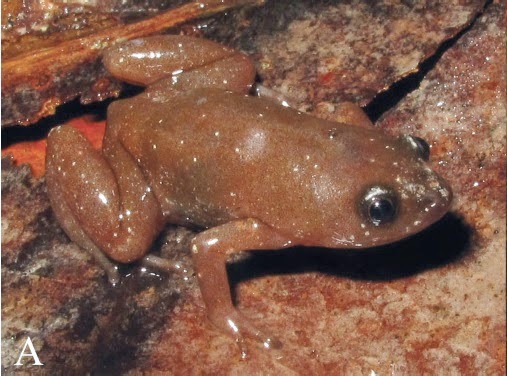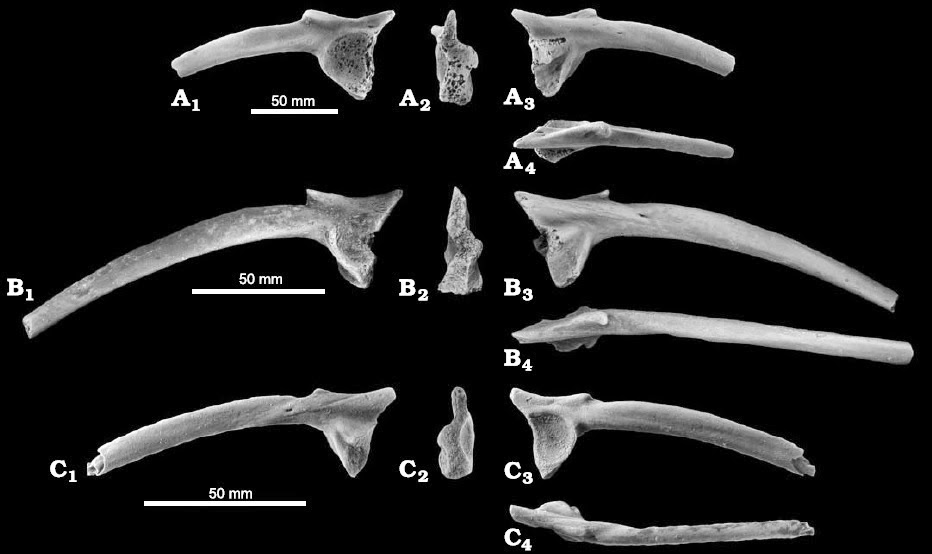Cryptic species are species that closely resemble other species, and
cannot be separated by simple, non-invasive examination. While taxonomists have
known about cryptic species for a long time, it was not realised how numerous
such species were until taxonomists began to use genetics to determine relationships
between species, about twenty years ago. The presence of cryptic species can
have a profound influence on conservation efforts, as ‘species’ thought to be
wide ranging with large populations and broad environmental tolerances can turn
out to be complexes of closely related but reproductively isolated species,
each with a smaller population and distribution, and narrower range of
environmental tolerances.
In a paper published in the journal PLoS One on 29 October 2014, a
team of scientists led by Jeremy Feinberg of the Department of Ecology, Evolution,and Natural Resources at Rutgers University describe a new, cryptic, species of
Leopard Frog from New York City
and the surrounding areas of the American East Coast.
The new species is named Rana kauffeldi,
after the herpetologist Carl Kauffeld, who studied Leopard Frogs in the eastern
United States
in the 1930s, and concluded that there might be an undescribed species in the
New York/New Jersey area. Fienberg et al.
recommend that it be given the common English name ‘Atlantic Coast Leopard
Frog’
Rana kauffeldiwas first identified on Staten Island, where it was noticed due to
its distinctive call, which differs from that of the two other Leopard Frogs
found in the northeastern United States, the Northern Leopard Frog, Rana pipiens, and the Southern Leopard Frog,
Rana sphenocephala, by its call (Rana pipiens and Rana sphenocephala are themselves cryptic, and can only be readily
separated by their calls, though these two species have long been known to
science). It was subsequently confirmed as a separate species by genetic
analysis, and subsequently found to be distributed in coastal areas from Connecticut to North
Carolina. The species favours coastal freshwater
wetlands, including tidally influenced waterways, marshes and wet meadows.
Rana kauffeldi, male specimen in dorsolateral view. Fienberg et al. (2014).
Rana kauffeldi is only the second species of Frog discovered in North America
north of Mexico
since 1986. It is also the first new species of Frog discovered in New England
since 1882, and only the seventh species of Amphibian ever discovered in New York State. Its presence in one of the
world’s largest and most densely populated metropolises is therefore somewhat
of a surprise, particularly as it is a fairly large and conspicuous species.
While the detection of new Frog species by genetic data is new, the detection
of such species by their calls is a long established procedure; for example the
Gray Treefrogs Hyla versicolor and Hyla chrysoscelis, small, tree-dwelling
and inconspicuous species from the eastern United States, have been recognised
as separate species for over 60 years.
See also…
Cryptic species are species which resemble one-another physically, and
which cannot generally be separated using traditional taxonomic
methodology, but which are nevertheless genetically and reproductively
isolated. Genetic studies of many groups of...
Many species of Amazonian Amphibians are considered to be highly
threatened due to habitat loss, with the potential for the situation to
become much worse due to climate change in the near future. This has led
to increased efforts to understand the ecology and...
The Cambay Shale formation from the Vastan Lignite Mine to the northeast
of Surat in Gujarat State, India, has produced a diverse and
significant Vertebrate...
Follow Sciency Thoughts on Facebook.




